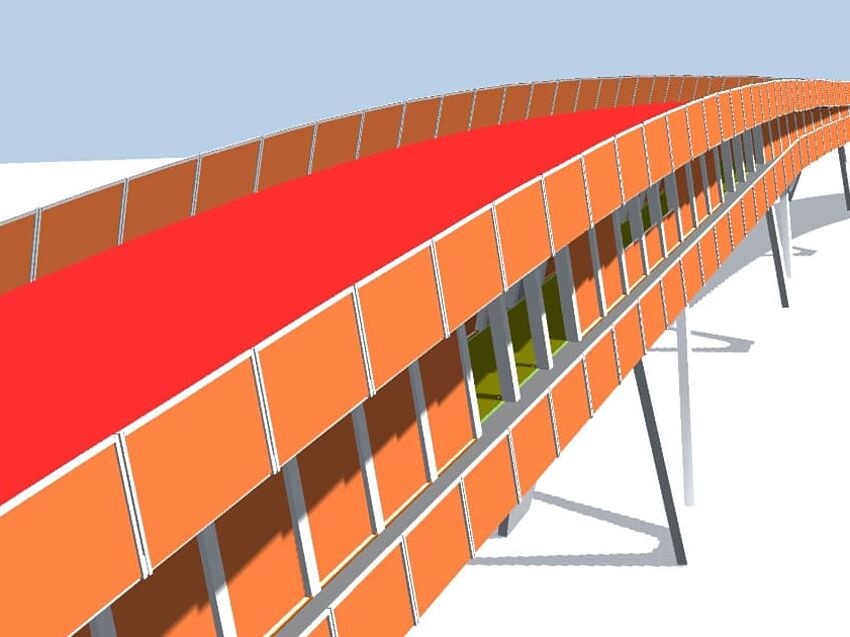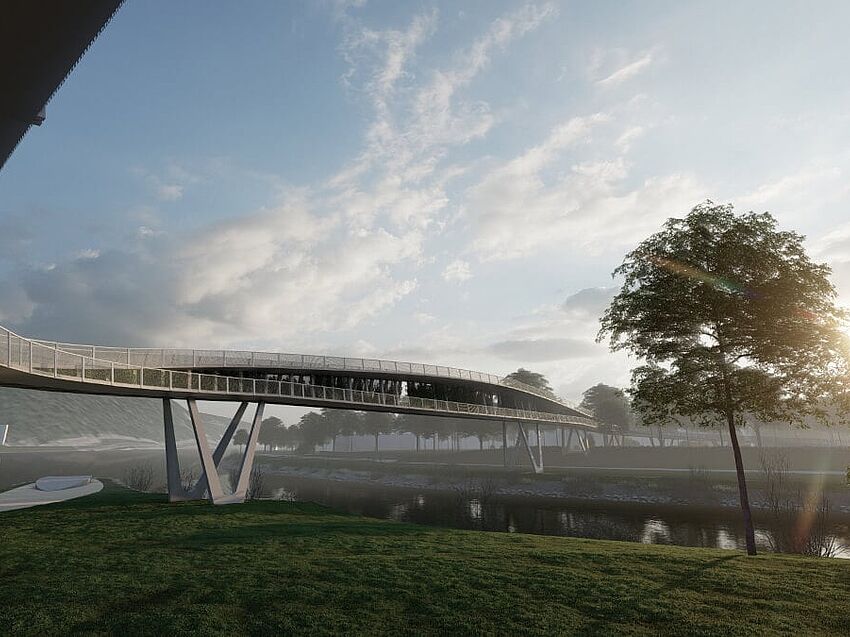Every project goes through a period of iterative design until a final solution is agreed on. However, managing these changes efficiently so that the design is delivered under budget can be a challenge. Each version can have minor amendments or significant changes, but either way, many of the steps required to make each change are often the same. Being able to streamline the design process and automate some of the repetitive work is one way to help ensure that budgets and timescales are adhered to. With ALLPLAN Architecture and ALLPLAN Engineering, this is made easy with the latest tools such as PythonParts and the new Visual Scripting Editor. If you want to deliver designs on time and on budget, these two tools should be an essential part of your design process.
Using PythonParts In ALLPLAN
Python is a programming language that creates smart, parametric objects. While the code is easy to read, it is less easy to learn how to write working code, particularly for architects and engineers who are already busy working on projects. To overcome this challenge, ALLPLAN has introduced Visual Scripting, which uses pre-written Python code blocks. By using pre-made PythonParts, the objects are already drawn and can be adjusted as needed by simply changing the properties or using the object handles. This eliminates the time needed to re-draw components using commands such as trim, extend, or copy as the object will automatically update itself to the new measurements.
Not only is this a quicker way of working, it also allows users to optimize their workflows to suit their own working methods. Commonly used components can be created as new objects to save time across multiple projects, and new functions can be added to existing objects. By using these functions, repetitive and recurring activities can be automated for increased design efficiency. For example, the Reinforcement Shape Builder included in ALLPLAN can automatically reinforce even freeform shapes by specifying the amount of concrete cover and detecting the edges of the shape. There’s no need to copy and individually adjust reinforcement bars throughout the shape, saving valuable time. Both ALLPLAN Architecture and ALLPLAN Engineering have a wide range of PythonParts included to help designers quickly respond to design changes and iterations while keeping the project on track.
Using Visual Scripting In ALLPLAN
Visual scripting gives architects and engineers the tools they need to create their own customized programs without any programming knowledge. Unlike writing Python code, the user only needs to know what the result should be and some mathematical knowledge. Visual scripting uses pre-written blocks of code – called nodes – which define different behaviors for a component, or a set of commands. The nodes can be visually arranged and linked to create the desired effect, such as creating a section from the model or adding information to existing objects. In effect, visual scripting gives designers the ability to create their own shortcuts (programs) that automatically perform certain algorithms.
Visual scripting is especially useful for creating complex shapes, parametric objects, and automating workflows. Objects created in this way can be used over and over again and can be quickly adapted to new situations by adjusting the parameters. For example, you may need to design a façade where the geometric conditions change frequently, and the shape of the façade needs to be adjusted frequently, too. Due to the parametric structure, it is possible to change one value and the other parameters adapt automatically. There’s no need to re-model the entire shape to the new dimensions, saving time and dramatically increasing the design efficiency. Visual scripting is just one of many powerful tools included in ALLPLAN 2020.
Managing Project Change Efficiently
Project change cannot be avoided, but it can be made more efficient and effective with the right 3D modeling software. Removing and automating repetitive design activities with advanced tools like those included in ALLPLAN 2020 is just one of the ways to help ensure that projects are delivered on time and on budget, despite any changes. And once objects and scripts are created, they can be used across multiple projects to help make the design process as efficient as possible. If you would like to start leveraging the power of technology to improve your projects, download a free, 30-day trial to see how automation can drive efficiency in design.




